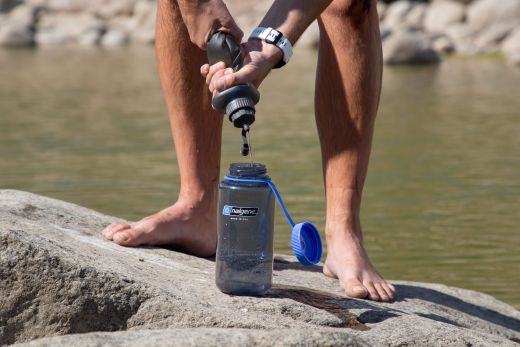If you’ve been drinking water straight from mountain streams for as long as you can remember, you might think that any clear, flowing water source is safe to drink from. Most are. But then there’s always a chance that your chosen trickle is harbouring a pathogen capable of emptying your insides and causing dehydration and other unpleasant symptoms. If livestock, wildlife or humans can reach an area, so can the harmful microbes that live in their feces. And the risk of such contamination is rising. As the number of trail users grows, so do the chances of you scooping up a cupful of perfectly clear but befouled water. Fortunately, there are several ways to make your water fit for human consumption. In this guide, I explain the four methods of water treatment and how they can be combined for maximum effectiveness. But first, let’s look at the different types of waterborne pathogens and go over some water treatment basics.
Types of waterborne pathogens
The three main types of waterborne pathogens vary in size and have to be treated with different methods. Here they are in descending order of physical size.
Protozoa
These single-celled organisms are found in all types of water and are a risk wherever there are human and animal feces. Because they are relatively large (typically 1.0 micron and bigger), they are easily filtered out. They’re also susceptible to UV and boiling, but can be resistant to chemicals. Iodine and chlorine are effective at killing Gardia but not Cryptosporidium. The latter is best eradicated with a combination of filtration and chlorine dioxide.
Bacteria
Like protozoa, dangerous bacteria can be introduced to a water source through feces. Although smaller than protozoa, most can be filtered out with devices that have met the requirements for bacterial removal (Absolute 0.2 filter or finer), and they can be eradicated with chemicals, UV light or boiling. In developing countries poor sanitation means that E. coli, Salmonella, and Shigella can pose a serious threat.
Viruses
Viruses are the smallest of the waterborne pathogens. They are species-specific so those that affect humans are only transmitted through human feces. They are a primary concern in developing nations but can still be a threat in the backcountry (especially popular campsites). Because they are very small (typically 0.01-0.1 microns), they can only be killed with UV purification or chemical disinfection.
Should you filter or purify your water?
Waterborne pathogens are always a possibility, and there’s no way to tell whether a pristine-looking stream is harbouring harmful microbes. The only way to be certain that water is clean is to treat it, and it’s recommended that you filter or purify any water that hasn’t been captured as rain. But when do you filter and when do you purify? Before we can answer that, we need to pin down some definitions.
Filtration vs purification
In this article I will use ‘filtration’ to refer to the removal of matter down to 0.1 microns in size. This rids you of bacteria and protozoa, the larger and more common pathogens in backcountry environments. ‘Purification’, on the other hand, refers to the elimination of all pathogens including viruses, which normally escape filtration. Purification is usually achieved by chemical treatment or UV radiation, but for simplicity sake I’m going to also use it to refer to the micro-filtration of everything smaller than 0.1 microns. So, filtration removes bacteria and protozoa (down to 0.1 microns), and purification is the neutralisation or microfiltration of all pathogens, including viruses and other microbes smaller than 0.1 microns.
Why not just purify water?
If purification eliminates more pathogens than filtration, why not just purify all your drinking water? Ideally, we’d be able to, but there are some practical challenges to UV and chemical purification (the alternatives to a $350 microfilter – see pump filters below). The first is that these types of treatment are more costly than filtering since their processes use either chemicals or batteries. The second issue relates to the use of UV purifiers, and that is that these devices only work with clear water. And the third is that chemical and UV purification don’t remove sediment, which can be pretty unappetising even if it isn’t dangerous. These factors along with the higher risk of bacteria and protozoa in backcountry areas (compared to viruses) make filters a better option for many outdoorsmen.
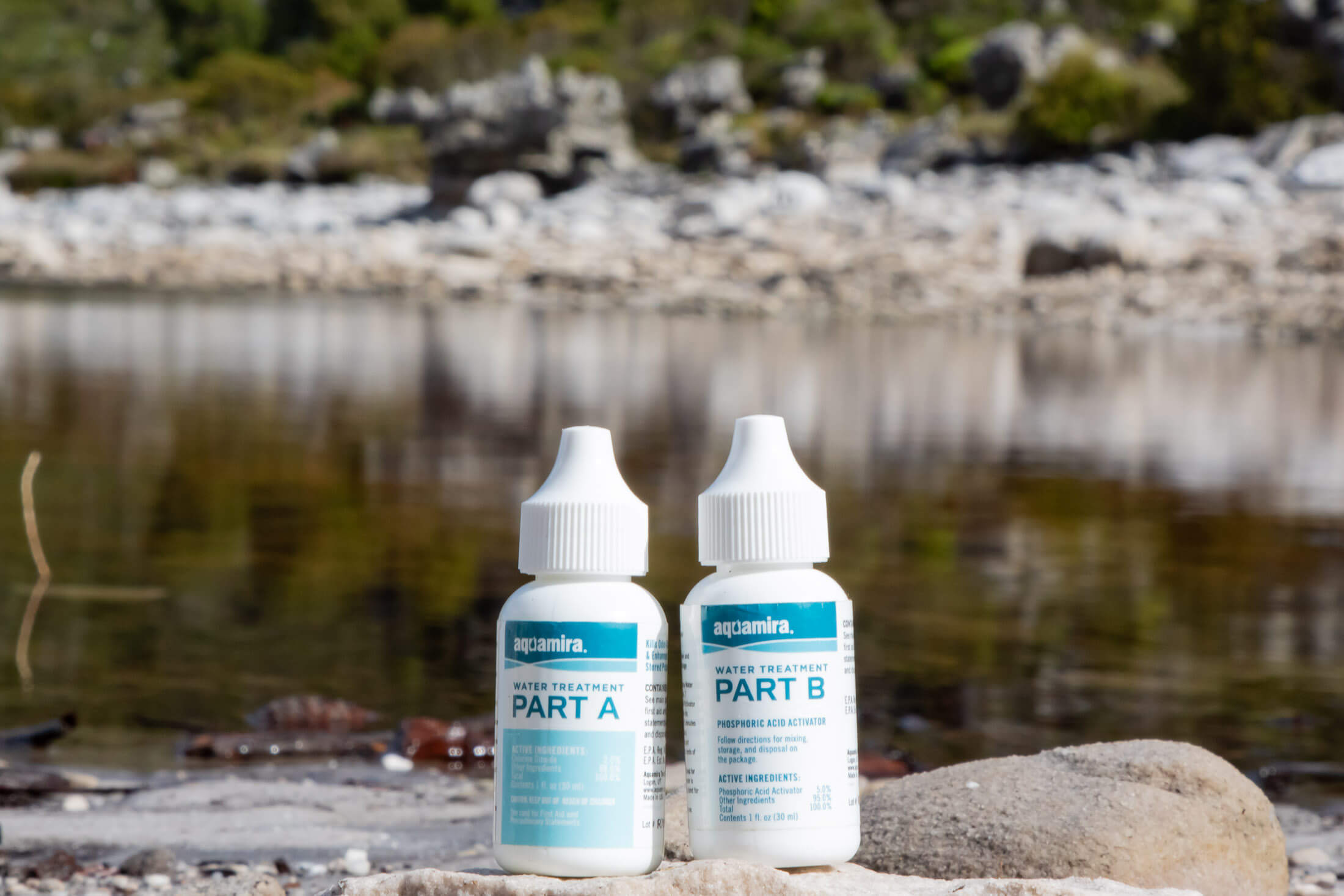
When should you purify and filter your water?
A filter offers sufficient protection in most North American backcountries. In these pristine environments, where human activity is relatively low, the main threats are protozoa and bacteria. Even a small sip & squeeze filter is sufficient to remove these, and it might be overkill to pack an additional purifier for eliminating viruses, given that they’re a lot less prevalent than larger nasties. On the other hand, if you’ve noticed people practicing poor camp hygiene in the area, purifying your water would be a wise precaution. The same goes for trips to developing countries, where water sanitisation standards might not be as high as those in more developed countries. In the last paragraph of this article, I offer a few suggestions for combining filtration with purification for total water treatment.
Is murky water unhealthy?
Water can be made murky by glacial sediment, leaf debris and silt. These natural particles aren’t a health concern, but they can clog filters and reduce the effectiveness of UV. If water is murky, and you’re not using a filter with a prefilter, it’s a good idea to first strain the water through a bandana or similar fabric. If the sediment is heavy, you might be able to separate it out by letting it settle.
Collecting water
When collecting water, it’s important to know how to judge whether a water source is safe or suspicious and how to collect water in way that reduces the chances of you picking up any contaminants or pathogens.
What to look for in a water source
- Flowing water, especially in a stream or river. Moving water isn’t conducive to the growth of algae or microorganisms.
- If no clear flowing source is available, look for clear water – that without a lot of sediment or silt. Clearer water will pass through a filter more easily.
- A location that allows you to collect water well away from the shore, where microorganisms tend to accumulate in higher concentrations.
Water sources to avoid
Water sources in the following areas are at greater risk of contamination and should be avoided.
- Any areas where there are signs of domestic animal activity
- Popular campsites and any areas that show signs of a prolonged human visit
- Dirty snow. This can be a sign of human or animal activity
- Water with large amounts of foam or brown scum. This can signify an algae bloom and the kind of nutrient rich environment that microorganisms thrive in.
How to collect water
To collect the cleanest water possible, scoop it from the surface of the least murky section of the water source. If this is shallow, use a pot lid to scoop water from the surface. Most filters have a prefilter to remove sediment and larger debris. If you don’t have one of these (maybe you’re going to boil the water or use a chemical treatment), you should strain the water through a bandana or similar piece of fabric. You can also separate out heavier sediment by allowing the water to sit for a few minutes.
Tip: After a heavy rain, wait several hours before gathering water from a steam, river or lake. The initial run-off can collect much surface material, which can contaminate and muddy any water collected. In such circumstances, rather collect water that runs straight off vegetation, rocks, or even the side of your tent.
Boiling
Boiling is the most effective way to eliminate the full spectrum of waterborne nasties. Murky water doesn’t impair effectiveness, and you’ll likely already have what you need: a stove and pot (making this a good backup if your filter fails). A minute-long rolling boil is sufficient at low altitude, but above 6,500 feet you’ll need to extend that to three minutes.
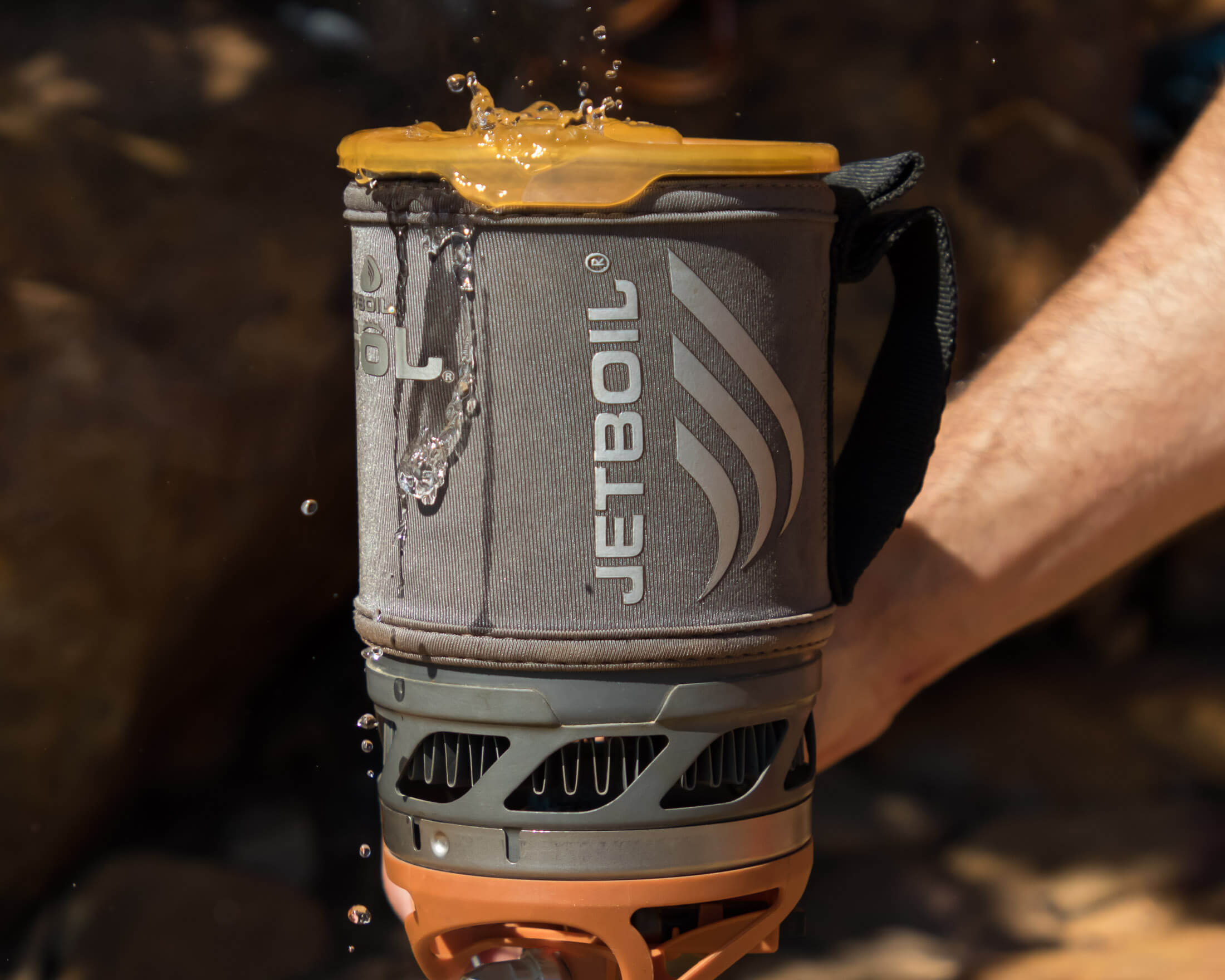
The only downsides to this technique are that you will need to carry extra canisters and will have to wait for your water to boil and cool. Boiling also won’t filter out any sediment if it was murky to start with. Remember to carry an extra fuel canister if this is going to be your primary means of purifying water.
Chemical purification
Chemical drops and tablets are a low-tech solution for killing viruses, bacteria, and, in some cases, protozoa. But they take time to work and are not without their limitations.
Iodine
Traditionally, hikers used iodine tablets when boiling water wasn’t an option. But iodine doesn’t kill Cryptosporidium, and it makes the water yellow and gives it a funky taste.
Chlorine
Chlorine has a low to moderately effective at killing Giardia and is highly effective at killing bacteria and viruses. But it is not effective at killing cryptosporidium.
Chlorine dioxide
Chlorine dioxide is better than iodine and chlorine in that it is at least moderately effective at killing cryptosporidium, and doesn’t leave any noticeable aftertaste.
UV purification
Filtering eliminates bacteria and protozoa but not viruses. To kill these microscopic pathogens, you’ll need to use ultraviolet or chemical purification. The vast majority of UV purifiers are pen-style devices. When used to stir a bottle of water for a set time (this depends on device - usually around a minute), the emitted UV light kills protozoa, bacteria, and viruses.
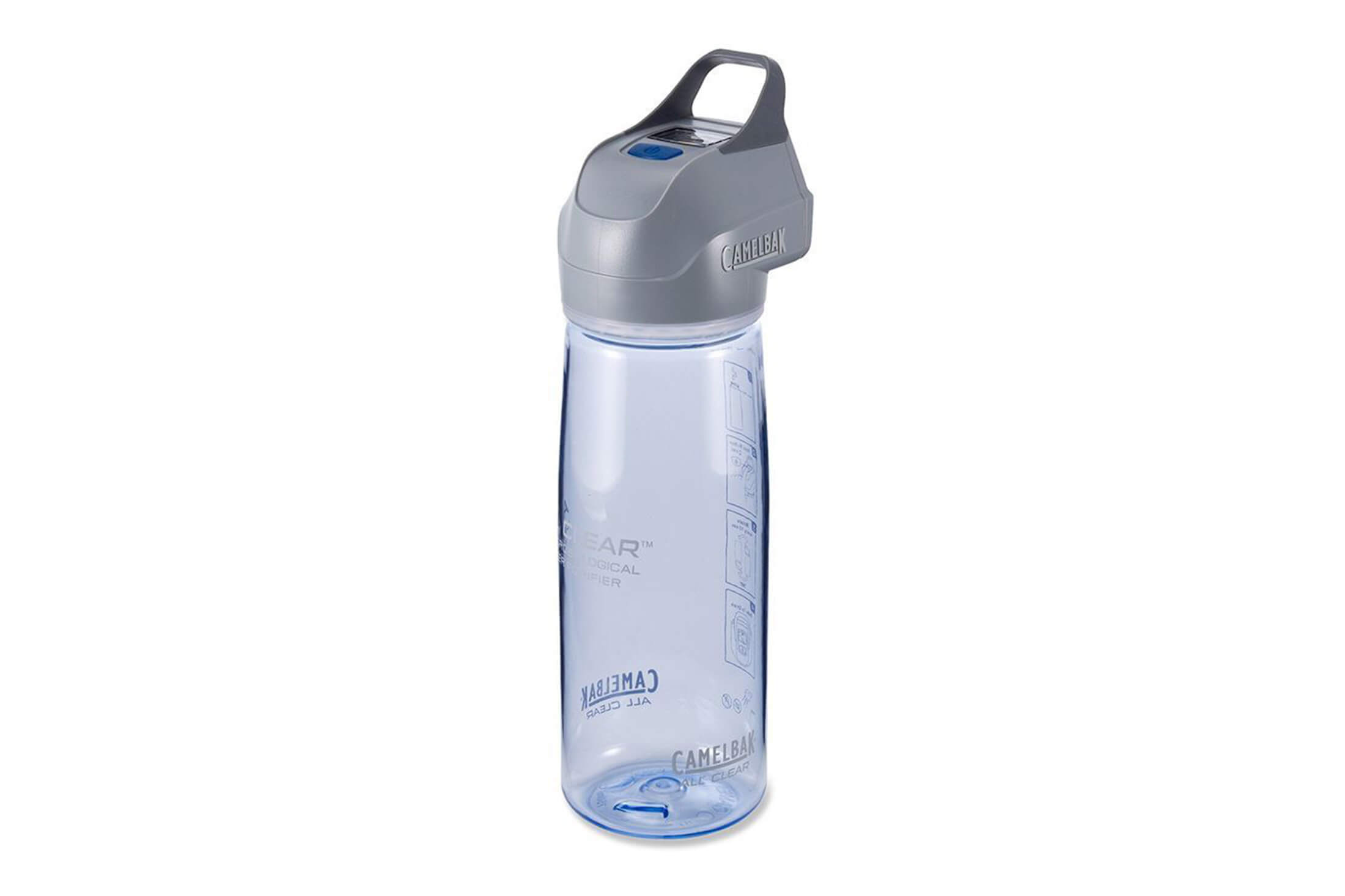
Besides needing batteries, the only drawback to UV purifiers is that their effectiveness can be impaired by any murkiness in the water. Some gravity-fed purifiers and pump purifiers have a built-in prefilter to remove sediment, but if you’re using a pen-style purifier, you will first have to filter your water through a bandana or similar fabric to remove any silt.
Filtration
Modern filters can remove particles as small as 0.1 microns and are effective at eliminating both bacteria and protozoa.
Sip & squeeze filters
Sip & squeeze filters are compact and versatile, and, as a result, are the most popular type of filter out there. Some models, like the Sawyer Mini, can be used as a straw, attached to a water bottle, and fitted inline with a reservoir. These are prefered choice of solo adventurers and small groups, and the Sawyer Mini is what I carry 95% of the time.
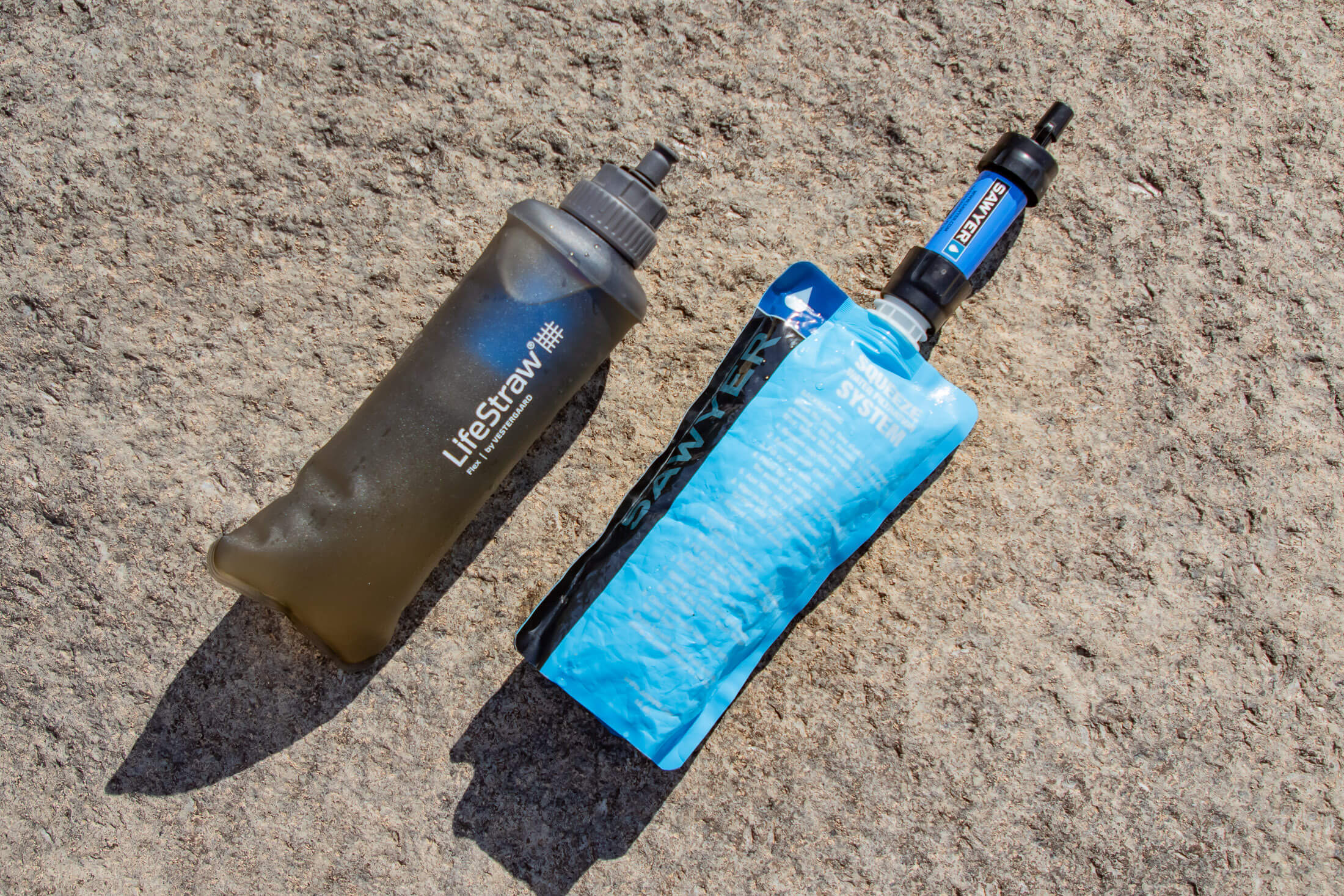
Gravity-fed filters
A gravity-fed system consists of three parts: a ‘dirty water’ reservoir, a tube, and a filter. The reservoir is filled with water and then hung so that water can flow gravity-fed through the filter and into a bottle or second ‘clean water’ reservoir. These filters are bulkier and more expensive than sip & squeeze filters, but then they also filter more water with less effort.
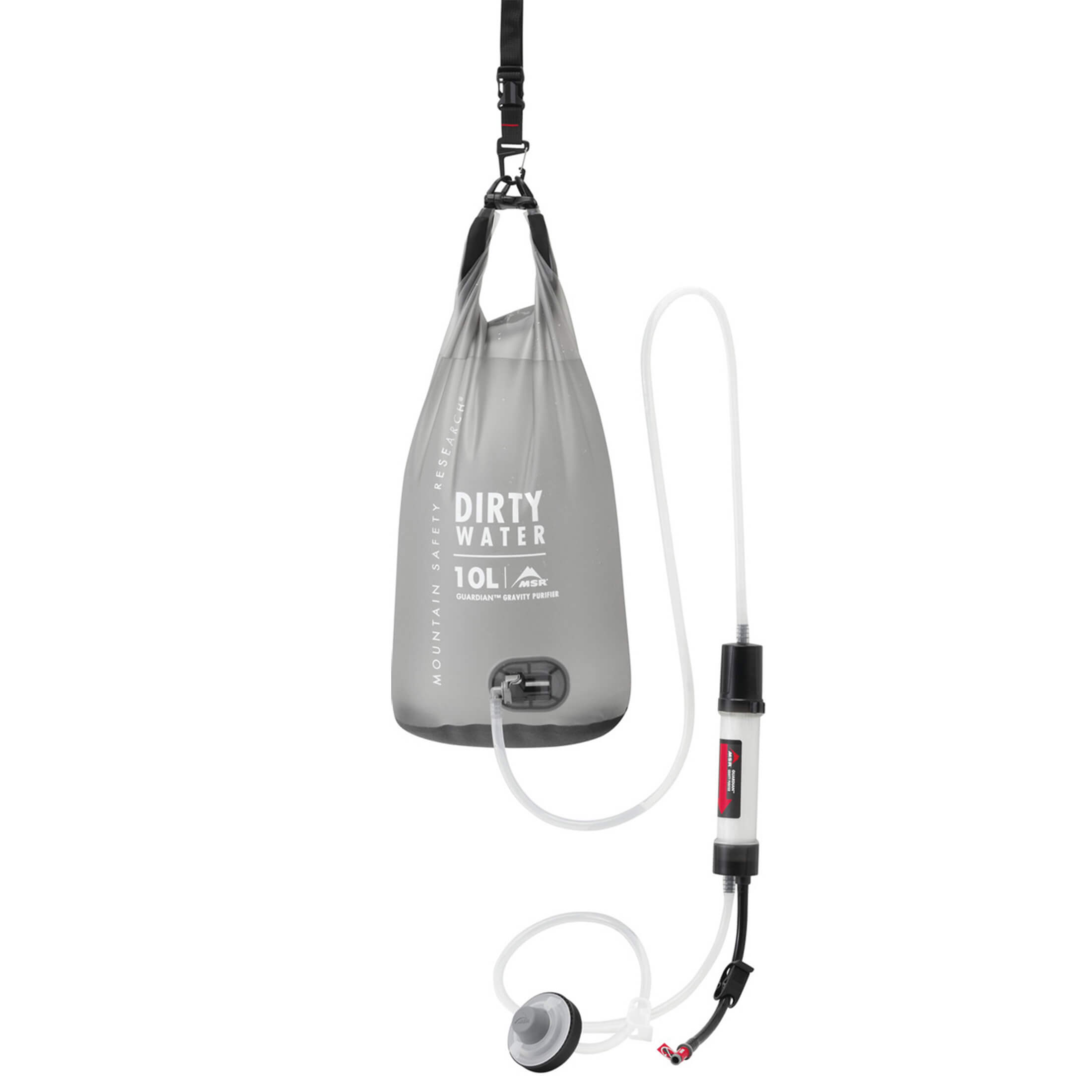
Pump filters
Pump filters allow you to filter water on demand and can be used to draw water out of very shallow water sources, but they are also the bulkiest and most expensive type of filter. Some models pump water out through a hose while others thread directly onto a bottle (you might already own a compatible vessel). Compare flow rates before you pay top dollar for one of these.

Drinking directly from a filter-fitted system vs a ‘clean water’ system
With sip & squeeze filters, you can either drink directly from the container used to collect your water – with the filter attached to the bottle or fitted inline with the reservoir – or you can squeeze the water out of this vessel, through the filter, and into a second container reserved for clean water. Some people might point out that drinking straight from the collection is simpler, but there are five reasons you might want to filter first and drink later, as I prefer to.
Easy sipping
It’s easier to drink out of a bottle or reservoir when you don't have to suck the water through a filter. This will be most apparent when you are breathing hard and are trying to drink between breaths.
Less clutter
Having a filter permanently fitted to your water bottle or hydration system can be a hassle. An inline filter can make it more difficult to remove a reservoir from a pack, and a filter attached to the top of your bottle can easily snag on things or just get in the way.
Reduced risk of cross contamination
When you drink from a bottle that you just collected the water with, there is always a risk of cross contamination. By drinking from a bottle that hasn’t been dipped into a potentially dirty water source, you significantly lower the chances of you ingesting some waterborne nasty.
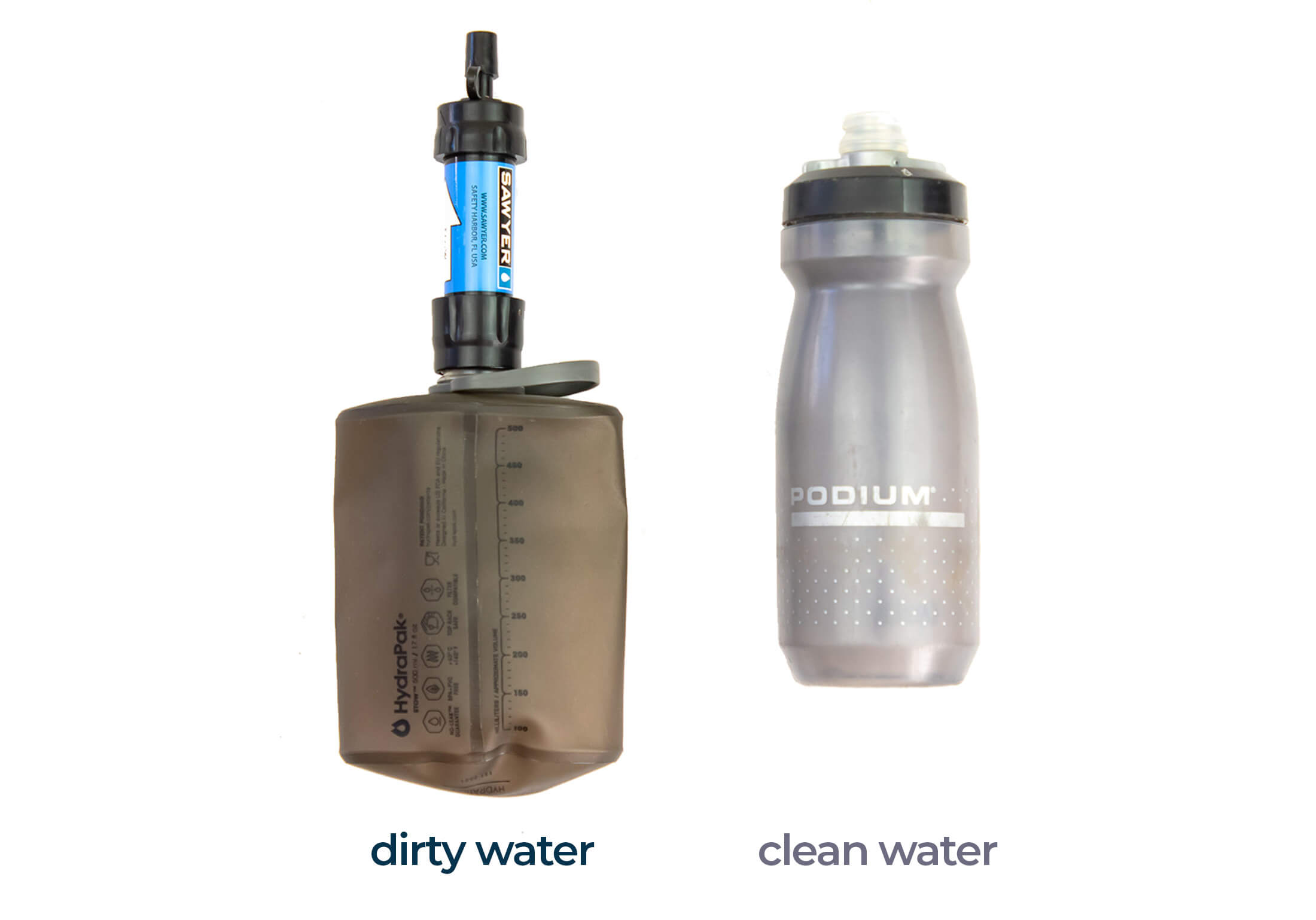
Water treatment best practices
A water treatment system is only as effective as the protocol with which it is used. By taking the following precautions, you can keep the risk of contamination to a minimum.
Use different containers for clean and dirty water
Cross contamination is one of the likeliest ways that harmful microbes could find their way into drinking water. If filtering from one vessel into another, use dedicated ‘dirty water’ and ‘clean water’ vessels. Ideally it would be easy to tell these apart. If they look similar, label them. Almost all gravity-fed systems have reservoirs marked as ‘clean’ and ‘dirty’ for this reason
Backwash your filter with clean water
To avoid contaminating your filter, you should only backwash it with clean water. Do this every five days or whenever the flow rate slows. And follow the manufacturer's instructions. Some sip & squeeze filters, like those made by Sawyer, have to be backwashed forcefully to loosen buildup.
Keep your hands clean
Many illnesses attributed to bad water are actually caused by poor hygiene. Keep your hands clean. Wash them before preparing food and treating drinking water. There’s not much point in washing your hands in water of dubious origins if the intention is to sanitise them. Rather, use hand sanitiser when in the backcountry.
Read the instructions
Filter pore sizes differ as do the effectiveness of different chemicals and the time it takes for them to work. Read instructions carefully so that you know what kinds of pathogens a product will eliminate and how to ensure maximum effectiveness.
Get more advice from this gearhead
You now know everything there is to know about water filtration and purification. Well, almost everything. I actually have an article just on water filters and purifiers. If you’ve decided that one of these will be your next gear purchase, I suggest reading this gear guide next. Otherwise, please see my many other articles on everything from outdoor skills to culture.
